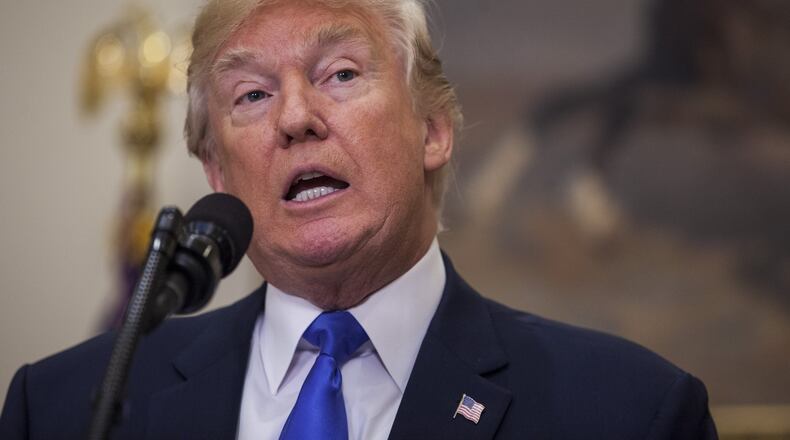In what has become a regular occurrence, Donald Trump took to Twitter this week to tout the nation’s economic performance on his watch.
In a tweet Tuesday morning, Trump praised some of the commentary about the Trump-era economy on “Fox & Friends”: ” ‘Corporations have NEVER made as much money as they are making now.’ Thank you Stuart Varney @foxandfriends Jobs are starting to roar, watch!”
We thought the remark about corporate profits was worth a closer look. The White House did not respond to an inquiry.
The most recent data is from January 2017, which predates Trump taking office.
In January 2017, corporate profits totaled $1.81 trillion on an annualized basis, according to the federal Bureau of Economic Analysis. That is the highest in history in raw dollars.
But the high profits Trump is touting came during President Barack Obama’s tenure. And as we always point out in these cases, this is not due solely to Trump (or Obama). For better or for worse, presidents have a modest impact on the economy. Cyclical factors, the international economy, demographics and technology all play important roles, and they tend to be beyond the control of any president.
Second, experts say measuring raw dollars is not as illustrative as analyzing corporate profits as a percentage of overall gross domestic product. That number in January 2017, 9.5 percent, is impressive but not unprecedented. That's due in large part to the reality that the economy tends to grow over time, with corporate profits not necessarily outpacing the overall growth level.
The current level of corporate profits as a share of GDP was exceeded once during Harry Truman’s presidency, five times under President George W. Bush, and a 14 times under President Barack Obama. In fact, that was almost half of the quarters during Obama’s tenure (44 percent).
Now let’s take a step back. What do these numbers actually mean?
Economists say measuring corporate profits is useful — up to a point.
On the one hand, “prosperity is ordinarily good news for both business owners and workers,” said Gary Burtless, an economist at the Brookings Institution. “It is certainly fair to cite high business profits as an indicator the economy is doing well.”
However, Burtless added that when corporate profits are historically high, they might be crowding out wage or salary increases for workers, which ends up curbing how widely the prosperity spreads through the rest of the economy.
Economists offer divergent views on how stark this trade-off is.
Dan Mitchell, a scholar at the libertarian Cato Institute, agreed that “capital and labor compete for shares of income in the short run.” Over the long term, however, “there is no trade-off between corporate profits and labor income,” he said.
But Dean Baker, an economist with the liberal Center for Economic and Policy Research, countered that “high corporate profits are good for people who own lots of stock — that’s about it.” In fact, Baker said, the historical record suggests that high levels of investment, in people and otherwise, doesn’t necessarily move in tandem with high profits.
Our ruling
In raw dollars, corporations are making more money as of January 2017 than ever before. It’s worth noting that the data isn’t in yet for a Trump-only quarter. And as a share of the broader economy, corporate profit levels are not unprecedentedly high — in fact, for almost half of the quarters under Obama, the share was even higher.
We rate the statement Half True.
“Corporations have NEVER made as much money as they are making now.”
— Donald Trump on Tuesday, August 1st, 2017 in a tweet
About the Author
